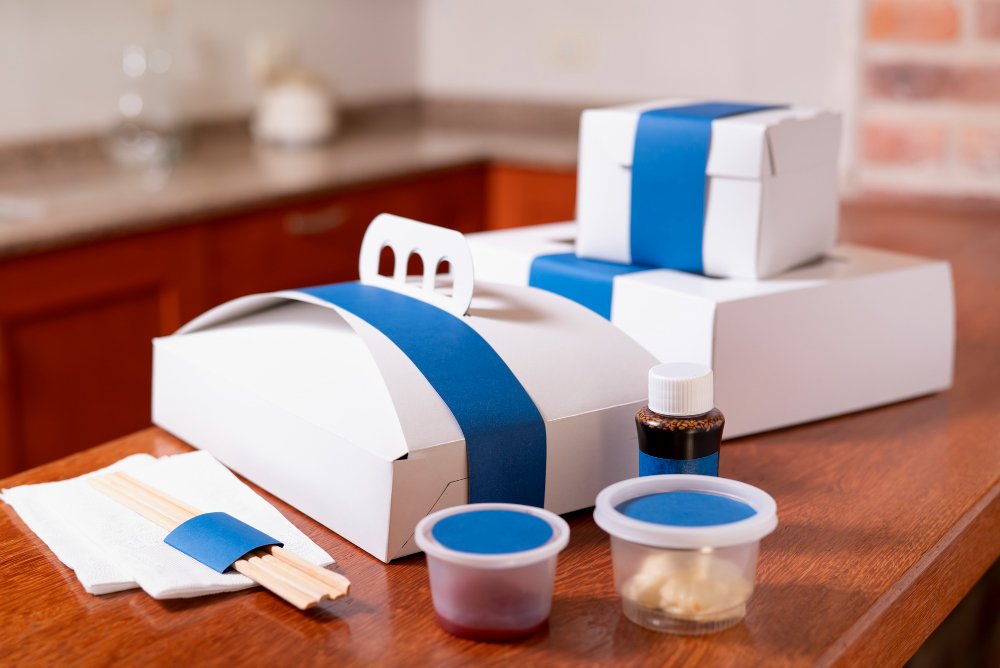If you’ve ever opened a box of pastries and been greeted by the warm smell of butter and sugar, you know how magical bakery products can be. But here’s the thing—getting that same freshness, texture, and flavor from the bakery to your customer’s hands is no small feat. The secret? The right packaging.
Think of packaging as the final touch to your baking process. It’s not just about wrapping bread or boxing cupcakes; it’s about protecting your hard work, keeping everything safe to eat, and making sure your brand leaves a lasting impression. In short, your choice of bakery packaging material can make all the difference.
Why Packaging Matters for Bakery Products
Baked goods are sensitive creatures—they don’t like too much air, too much moisture, or too much handling. Without the right bakery products packaging, bread turns stale, cookies lose their crunch, and cakes can dry out faster than you’d like.
Good bakery packaging:
- Locks in freshness and aroma
- Protects from damage and contamination
- Makes your products look irresistible on the shelf
- Shows customers you care about quality and presentation
Your customers taste with their eyes first, and your packaging is their first “bite.”
Packaging Options for Different Bakery Products
Different baked goods need different homes. Here’s a quick guide to the best choices for your creations:
1. Paper Bags
Perfect for bread packaging, especially crusty loaves. Paper lets the bread breathe so the crust stays crisp, while still keeping it safe from dust and handling. Kraft paper bags with a little transparent window are great for showing off your product without opening the bag.
2. Plastic or Compostable Film Bags
For soft, fluffy bread or items that need moisture, like brownies or muffins, a sealed bag works wonders. Many bakeries now use biodegradable or compostable films so they can be gentle on the planet without compromising freshness.
3. Cardboard Bakery Boxes
When you’re packing up a frosted cake, delicate pastries, or donuts, nothing beats a sturdy box. Not only does it keep everything safe during transport, but it’s also a blank canvas for your branding.
4. Clamshell Containers
If you want customers to see exactly what they’re buying—think cupcakes, cookies, or pies—transparent clamshells are your friend. They keep everything intact while letting your baked goods show off.
5. Foil Wrapping
A quick wrap in foil can be perfect for warm bread or rolls. It locks in heat and freshness for short-term storage or delivery.
6. Butter Paper
Butter paper is the unsung hero of bakery products packaging. It’s grease-resistant, so it keeps pastries, brownies, and cakes from sticking. It’s also heat-resistant, making it perfect for lining trays or wrapping warm treats fresh from the oven. And yes, there are biodegradable versions now—ideal for bakeries that want to stay eco-friendly.
How to Choose the Right Bakery Packaging Material
When picking packaging, it’s not one-size-fits-all. Here’s what to keep in mind:
- Product Nature – Crispy goods like baguettes need breathable bags, while soft bread does better in moisture-locking packaging.
- Food Safety – Always use food-grade materials to protect your bakery products from contamination.
- Sustainability – Eco-friendly choices like compostable bags, recyclable boxes, and biodegradable butter paper can win you loyal, environmentally conscious customers.
- Branding – Whether it’s a rustic paper bag or a sleek printed box, packaging is an opportunity to tell your brand’s story.
- Cost – Choose something that balances quality and budget, especially if you’re buying in bulk.
The Shift Toward Sustainable Bakery Packaging
These days, customers don’t just want delicious bread—they want it in packaging that won’t end up in a landfill forever. That’s why many bakeries are switching to:
- Compostable bread bags
- Recyclable kraft paper packaging
- Minimal plastic or plant-based films
- Biodegradable butter paper wraps
It’s better for the environment and better for your brand image.
Storage & Display Tips for Bakery Products
- Keep packaged goods away from direct sunlight and moisture.
- Use transparent windows for visibility—people shop with their eyes.
- Rotate stock so older items are sold first.
- Always label with ingredients and best-before dates.
Final Thoughts
Packaging is the last ingredient in your recipe for success. The right bakery products packaging not only keeps your creations fresh but also makes them irresistible to customers. Whether it’s the rustic charm of a kraft bread bag, the professional polish of a printed cake box, or the practicality of eco-friendly butter paper, your choice tells customers you care about every detail.
When you match the right bakery packaging material to the right product, you’re not just selling baked goods—you’re delivering an experience from the oven to their hands.
Your Partner in Eco-Friendly Bakery Packaging
At GreenMatter Packaging, we help bakeries like yours find the perfect balance between freshness, presentation, and sustainability. From compostable bread packaging to biodegradable butter paper, we’ve got solutions that protect your bakery products while caring for the planet.
Explore our range of eco-friendly bakery packaging material today and give your baked goods the presentation they deserve.
Visit GreenMatter Packaging to get started.
FAQs About Bakery Packaging
Q1: What’s the best way to keep bread fresh?
Crusty bread stays best in breathable paper, while soft bread prefers sealed bags.
Q2: Can eco-friendly packaging really protect bakery products?
Absolutely—modern biodegradable and compostable options perform just as well as traditional plastic.
Q3: How important is design in bakery packaging?
Very. A beautiful box or bag can turn a one-time purchase into a repeat customer.
Q4: Do I need different packaging for each bakery item?
Yes. Bread packaging needs airflow, while cupcakes need sturdy, protective boxes.
Q5: Is butter paper safe for direct food contact?
Yes—food-grade butter paper is safe, grease-resistant, and perfect for wrapping baked goods.


